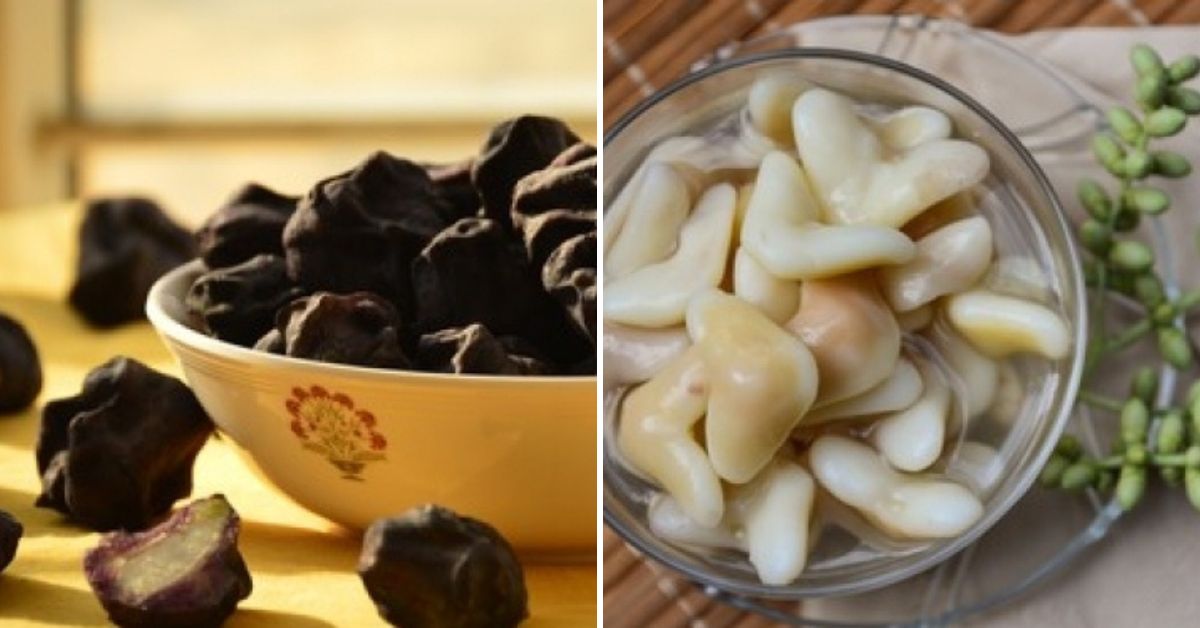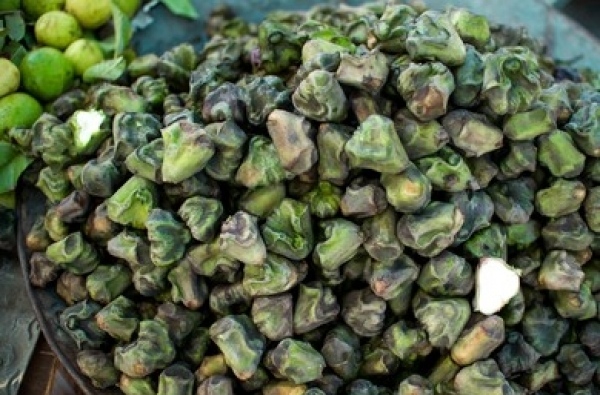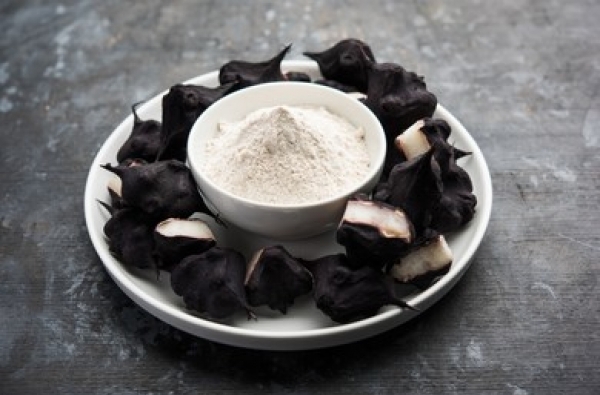3 Unique Ways Indians Consume Water Chestnuts & Why They’re Healthy During Winters
Here are a few ways to enjoy water chestnut or singhara, a winter vegetable packed with vitamins, antioxidants, and more -- plus, a bonus recipe inside.

India has consumed water chestnut, or singhara, for at least 3,000 years. Particularly relished in the winter, the somewhat sweet and crunchy aquatic vegetable is served in many forms — raw, candied or pickled to make for quick snacks, or stir-fried and served in elaborate meals.
It is also consumed while fasting during Navratri, and one can often spot roadside vendors selling raw or boiled singhara, especially during this time of the year.
Besides making for delicious additions to Asian recipes, water chestnut is also packed with a host of health benefits, and is particularly an excellent source of antioxidants. It is also free of fat, cholesterol, and gluten.
So let’s take a look at some of the health benefits of including singhara in our diet this season:
- Aids weight loss
One of the highlights of singhara is that it is very low in calories. It is classified as a high-volume food due to its high content of water and fibre. Therefore, they aid weight loss by effectively curbing hunger and keeping one full for a longer period of time.
- Boosts immunity
This aquatic vegetable is rich in antioxidants that help boost the immune system and fight free radicals. These antioxidants can help the body fight oxidative stress, which is linked to many chronic diseases.
It is also a great source of ferulic acid, an antioxidant which plays a crucial role in slowing down the growth of certain cancer cells

- Lowers high blood pressure
An excellent source of potassium, water chestnuts help decrease high blood pressure and reduce the risk of heart diseases. Studies suggest that people who consume large quantities of potassium-rich food have a significantly lower risk for stroke and high blood pressure.
- Reduces stress
Water chestnuts are a good source of Vitamin B6, which can help deal with stress and promote healthy functioning of the nervous system. It also helps the production of neurotransmitters that boost moods and induce sleep.
- Promotes good digestion
Because they have good fibre content, water chestnuts help the body digest food more efficiently. Fibre promotes digestion by easing the movement of food through the intestines. It also absorbs water and softens stools so they pass more easily.
Stir fries, curries, and more
Singhara is widely consumed in the Northern regions of India and is versatile — it can be boiled, grilled, roasted and even turned into sweet and savoury dishes.
Here are a few ways to eat water chestnut:
- Singhara atta or flour:
Water chestnuts are mostly used as atta or flour to make delicious chapatis, puris, paranthas and even pancakes.

The flour is made by grinding dried water chestnut and makes for a great and healthy alternative to regular wheat flour. Though savoury, it can also be used for making sweets like halwa. It is also a popular fasting-friendly food during the Navratri festival.
- Singhara stir fry:
Chop up some water chestnut and add tempered curry leaves, cumin and mustard seeds to make a delicious stir fry. You can also consume it raw in salads.
- Singhara sabzi or curry:
Singhara can be boiled or pressure cooked to make curries, kadhi, and more. You can include it in different curries like you would potatoes.
Here’s a recipe to make tasty and healthy singhara halwa:
Ingredients:
- 1 cup water chestnut flour
- 4 tablespoons ghee
- ¾ cup sugar
- ½ teaspoon cardamom powder
- 1 tablespoon of almonds slivers
- 1 tablespoon of pistachio slivers
How to make:
- Take a pan and heat the ghee, then add water chestnut flour. Stir continuously and cook it on a slow flame till it turns light brown in colour.
- Then add two cups of warm water, mix well and stir continuously on a slow flame till all the water is absorbed.
- Add sugar, mix well and stir continuously on a slow flame for about 4 more minutes.
- Switch off the flame. Add the cardamom powder and mix well.
- Garnish the halwa with almonds and pistachio slivers.
- Serve it hot.
Sources:
Effect of increased potassium intake on cardiovascular risk factors and disease: systematic review and meta-analyses, published by National Center for Biotechnology Information on 3 April 2013.
Ferulic acid exerts antitumor activity and inhibits metastasis in breast cancer cells by regulating epithelial to mesenchymal transition, published by National Center for Biotechnology Information in July 2016.
Water incorporated into a food but not served with a food decreases energy intake in lean women, published by National Center for Biotechnology Information in October 1999.
Singhara halwa recipe by Tarla Dalal.
What are the health benefits of water chestnuts?, published by Medical News Today on 28 February 2019.
Health Benefits of Water Chestnuts, by Poonam Sachdev; published on 21 September 2022.
Edited by Divya Sethu
If you found our stories insightful, informative, or even just enjoyable, we invite you to consider making a voluntary payment to support the work we do at The Better India. Your contribution helps us continue producing quality content that educates, inspires, and drives positive change. Choose one of the payment options below for your contribution- By paying for the stories you value, you directly contribute to sustaining our efforts focused on making a difference in the world. Together, let’s ensure that impactful stories continue to be told and shared, enriching lives and communities alike. Thank you for your support. Here are some frequently asked questions you might find helpful to know why you are contributing?

This story made me
- 97
- 121
- 89
- 167











